Tired of mushy noodles? Learn these quick tips to cook pasta like an Italian chef and create restaurant-quality dishes at home.
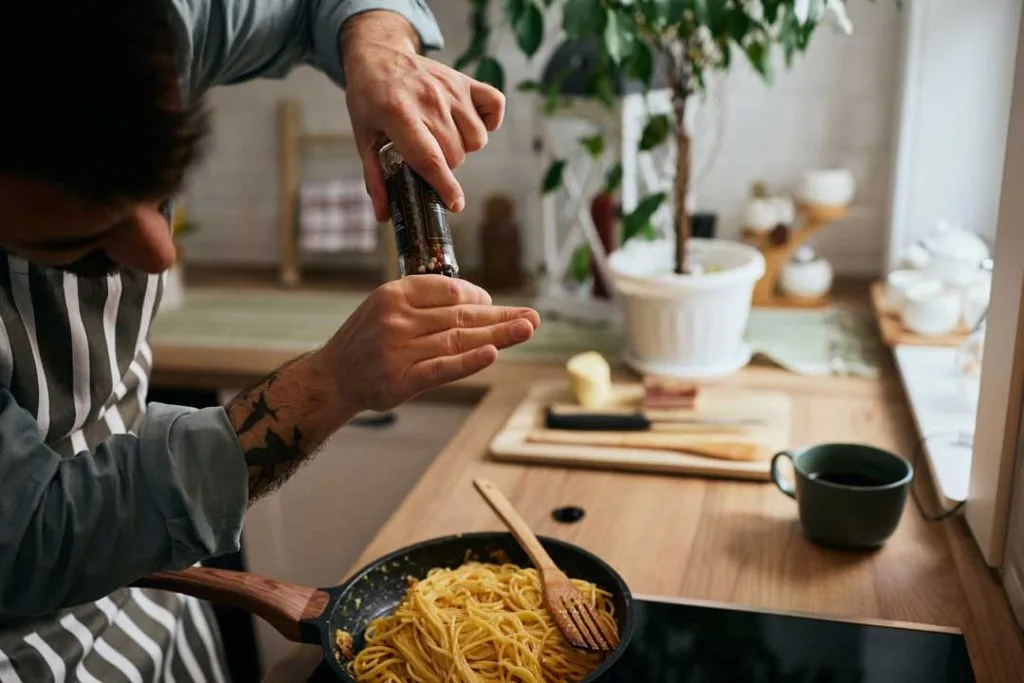
Cooking pasta might seem as simple as boiling water and tossing in some noodles, but if you want to channel your inner Italian chef, there’s a bit more finesse involved.
Let’s face it, nobody wants to end up with a soggy, gummy mess that’d make an Italian nonna weep. The good news? With a few quick tips, you can transform your pasta game and create dishes worthy of a trattoria.
Choosing The Right Pasta
Picking the perfect pasta isn’t just about grabbing whatever’s in the cupboard. Size, shape, and texture are key players in this culinary game.
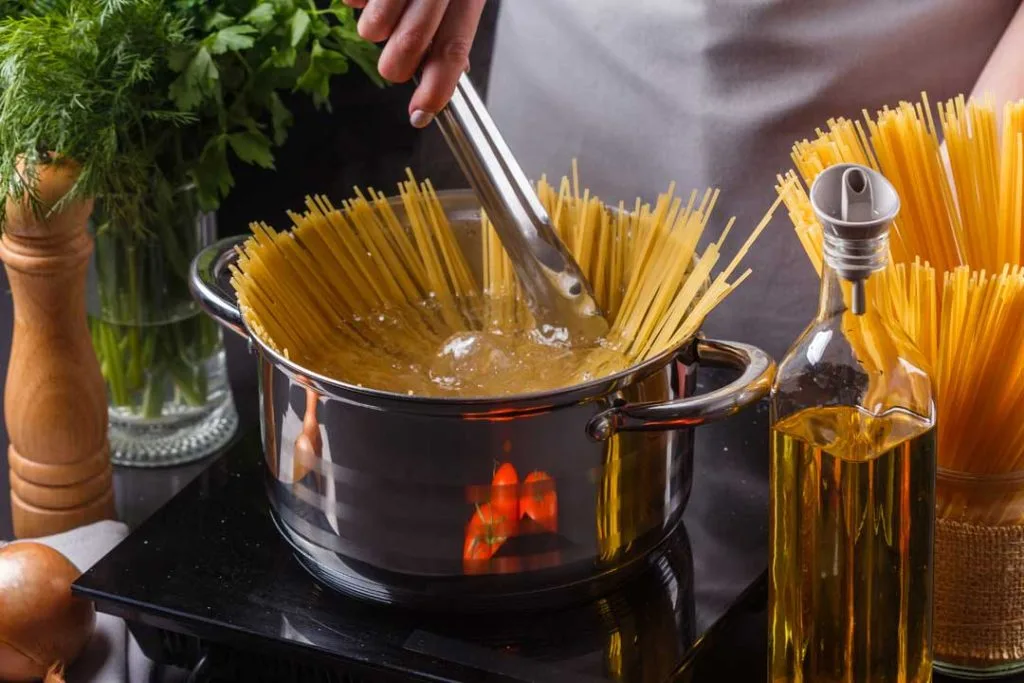
Fresh Pasta vs. Dried Pasta
Fresh pasta feels luxurious with its silky texture and tender bite. It’s perfect for delicate dishes like fettuccine alfredo or ravioli.
However, it doesn’t hold up as well to heavy sauces because it’s softer and more fragile.
On the other hand, dried pasta brings a firm, chewy structure that’s practically made for hearty, robust sauces like ragù or puttanesca. Bonus: it lasts forever in your pantry, so no judgment if you’re cooking it months later.
Matching Pasta Shapes To Sauces
Think of pasta shapes as matchmaking for your sauce. Long, smooth pasta like spaghetti loves a loose, liquidy sauce that can coat each strand evenly.
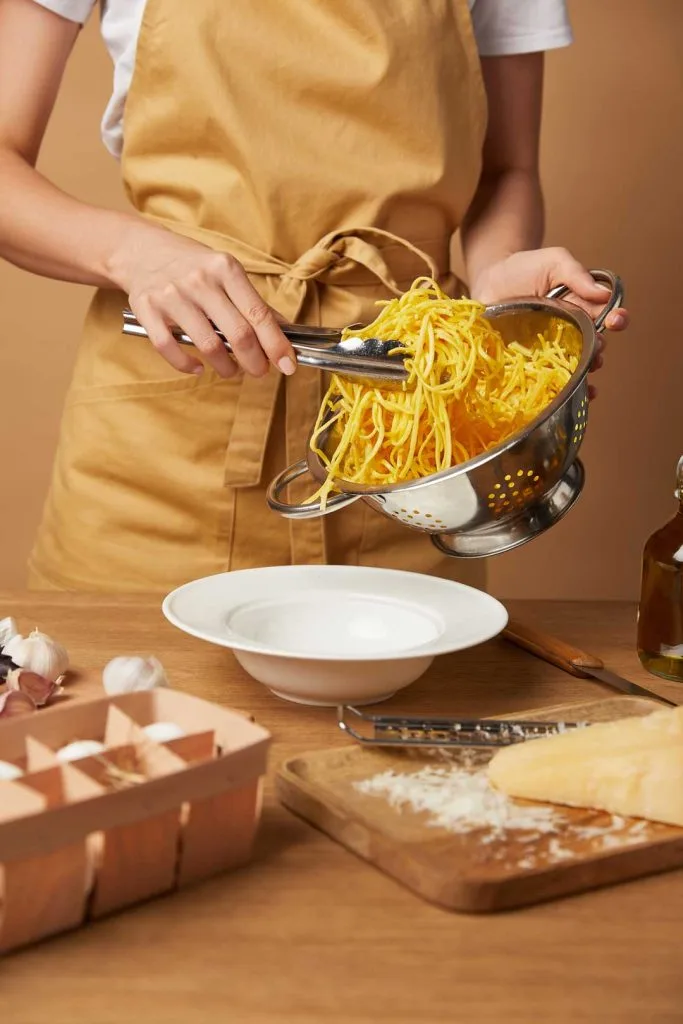
Ridged options, like rigatoni or penne, are obsessed with chunky, textured sauces that stick to their grooves. Short shapes, like farfalle, are all about catching thick sauces in their folds. Use the wrong pairing, like spaghetti with heavy ragù, and you risk more sauce in your bowl than on your fork.
If you want to learn more about matching pasta shapes to sauces, go to justalittlebite .com. Keep the romance alive—match those shapes wisely.
Essential Pasta Cooking Tips
Cooking pasta like an Italian chef isn’t rocket science, but a few easily overlooked details can make the difference between “meh” pasta and mouthwatering magic. Follow these essential tips to level up your pasta game.
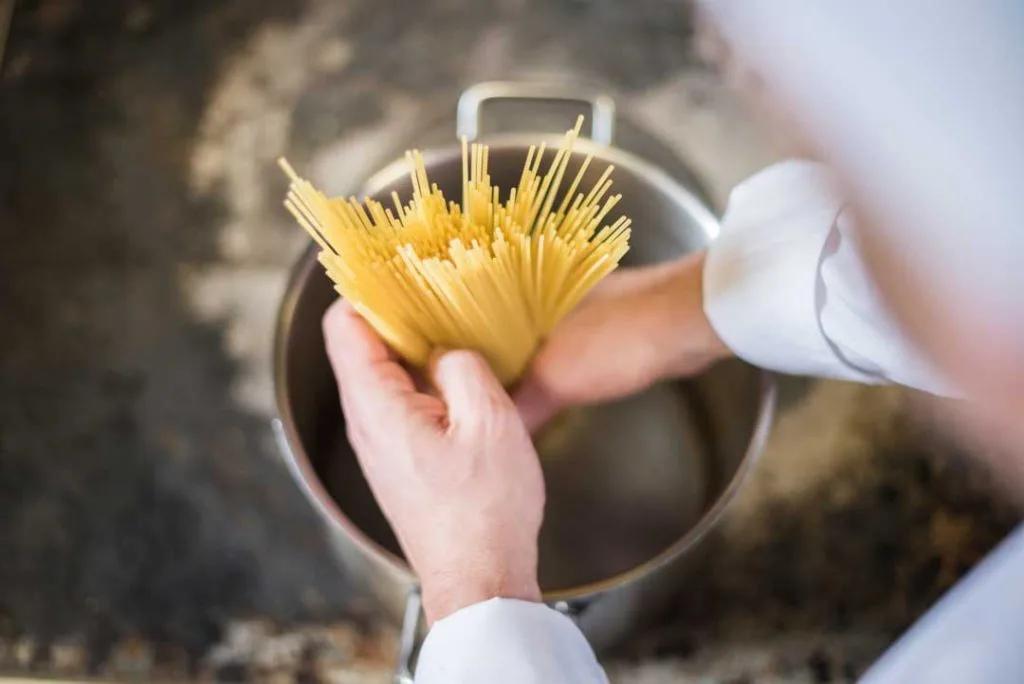
Use A Large Pot And Boil The Right Amount Of Water
Small pots and cramped noodles are the enemy of good pasta. Use a large pot, ideally 5-6 quarts for every pound of pasta, and fill it with at least 4 quarts (3.8 liters) of cold water. This allows the pasta to float freely, cook evenly, and avoid forming one big sticky lump.
Make sure the water reaches a rolling boil—the kind that looks like bubbling chaos—before tossing the pasta in. Rushing this step means gummy noodles, and no one wants that.
Salt The Water Generously
Don’t be stingy with the salt. Add 1 heaping tablespoon of kosher salt for every 4 quarts of water. As the pasta cooks, it absorbs some of this salty goodness, seasoning it from the inside out.
Think of it as setting the foundation for flavorful pasta instead of bland regret. Remember, most of the salt won’t even stay in the pasta, so don’t panic and skimp.
Cook Pasta To Al Dente Perfection
Al dente literally translates to “to the tooth,” and that’s how your pasta should feel—firm but tender with a slight bite.
Start taste-testing a minute before the package says it’s done. Pull the pasta off the heat a little early, allowing it to finish cooking in the sauce for that perfect texture.
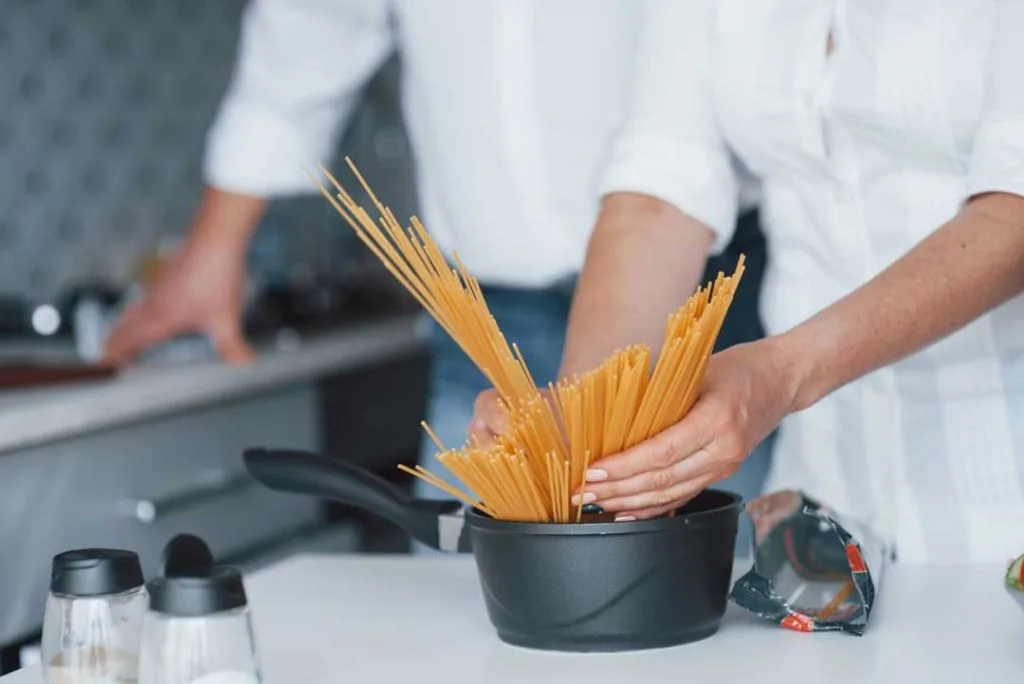
Overcooked pasta is floppy, lifeless, and frankly embarrassing. Channel your inner Italian and keep it toothsome.
Don’t Rinse The Pasta After Cooking
After draining, resist the urge to rinse your pasta under cold water unless you’re making a salad. Rinsing washes away the starches that help sauces cling to the noodles. Embrace the starch—it’s the glue that turns sauce and pasta into a harmonious, delicious dish. Instead, drain it, toss it straight into your sauce, and let the magic happen.
Making The Most Of Pasta Water
Pasta water is liquid gold in Italian cooking. That cloudy water you used to pour straight down the drain? It’s your secret weapon for authentic, mouthwatering pasta dishes.
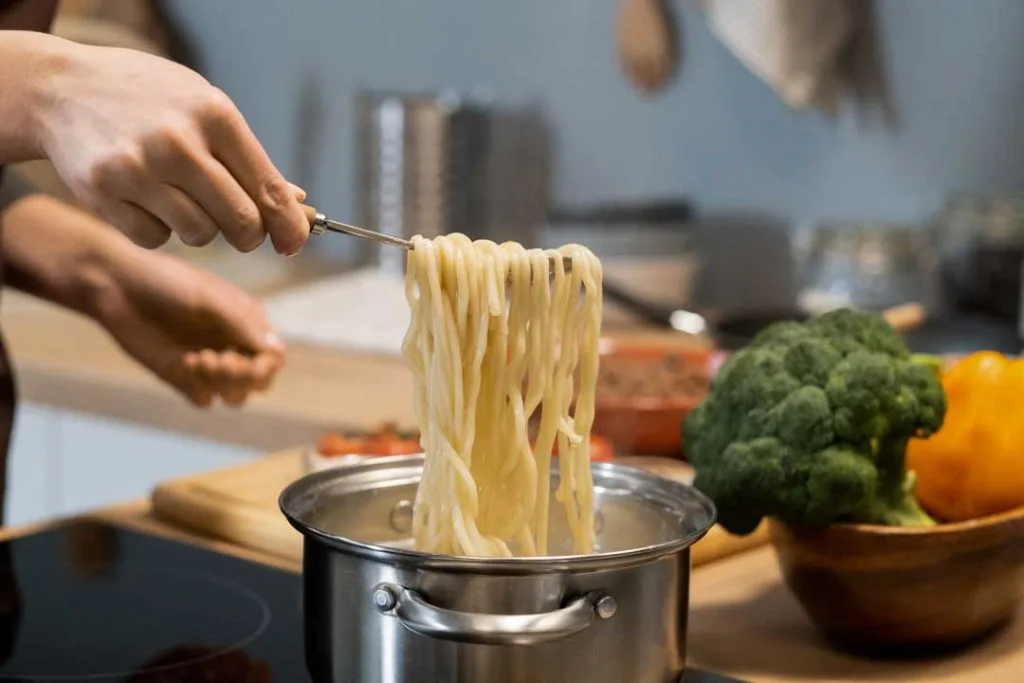
Why You Should Save Pasta Water
Saved pasta water is like having a flavor-enhancing magic trick up your sleeve. It’s packed with starch from the cooking pasta, which thickens sauces, creating a silky texture that sticks to your noodles.
Tossing your sauces with it helps blend flavors seamlessly, leaving you with a dish so good you’ll consider eating it straight from the pot. If your sauce seems too thick or lacks that glossy sheen, pasta water smooths it out like a charm.
Without it, you’re robbing your dish of the very essence that ties all the flavors together.
How To Use Pasta Water In Your Sauce
Throw that ladle (or mug) of pasta water directly into your sauce while you’ve still got the heat going. Slowly splash it into creamy sauces like cacio e pepe or into pesto for a smooth, restaurant-worthy finish.
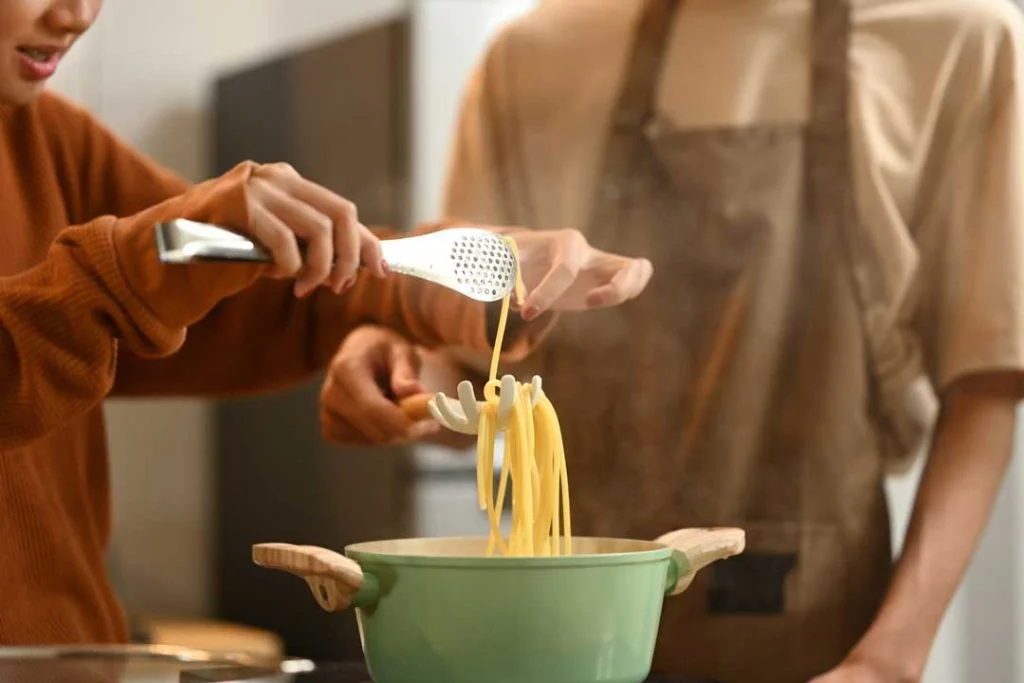
Stretch out olive oil-based sauces like aglio e olio with it, letting it carry all those garlic and chili flake flavors to your pasta. Feeling fancy? Add a bit while you’re tossing dry ragu, reviving it into a saucy masterpiece.
Don’t guess—go little by little until the sauce clings to the pasta like a clingy ex. Just never throw in an ocean of it, or you’ll end up with soup instead of sauce. Save a mugful before draining, and you’ll never cry over dry pasta again.
Preparing Pasta Like An Italian Chef
Executing pasta like an Italian chef means treating every step with reverence—from water boil to the final plate. Here’s how to bring that Italian virtuosity to your kitchen.
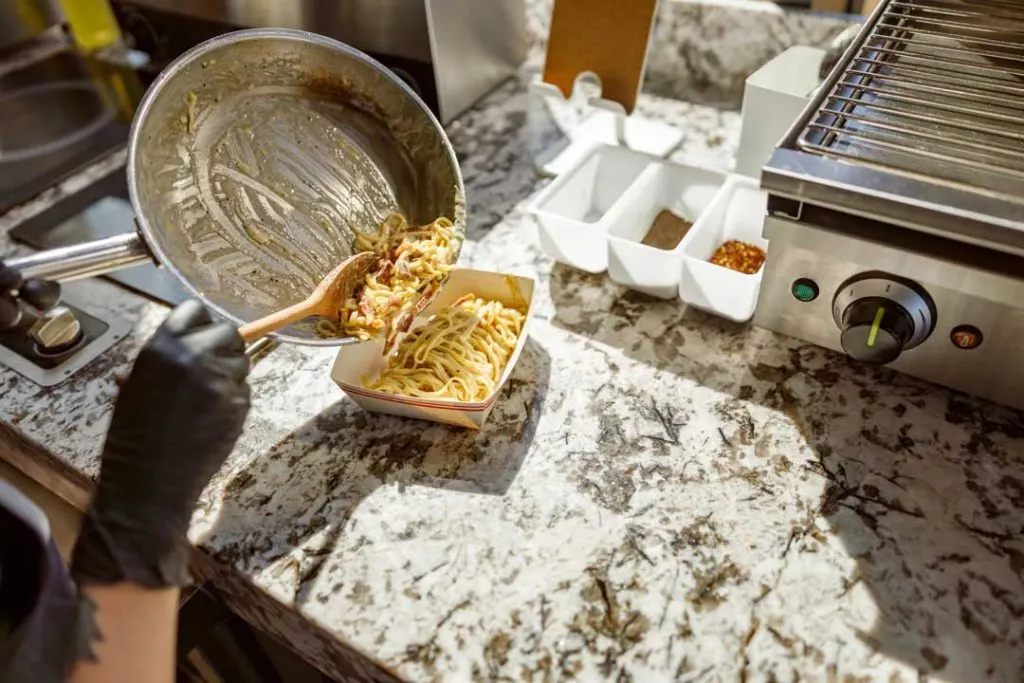
Toss Pasta With The Sauce Before Serving
Mixing pasta with the sauce isn’t just tradition; it’s science. Letting the pasta finish cooking in the sauce allows it to absorb the flavors and thicken the sauce with its starch. This creates a cohesive dish rather than one where the noodles and sauce awkwardly coexist. Picture your spaghetti swimming happily in marinara, not just being lifeguarded by a sauce ladle.
Pro Tip: Don’t simply dump everything in a bowl—use a wide pan to toss the pasta gently in the sauce. Add a splash of reserved pasta water for a silky, restaurant-quality texture.
Avoid Adding Oil To The Water
Pouring oil into your boiling pasta water is a rookie move that’s frowned upon in authentic Italian kitchens.
While it might look like you’re doing something fancy, what you’re actually doing is sabotaging the sauce adhesion. Oil-coated noodles are like Teflon—they repel flavor and leave you gnashing your teeth at unseasoned carbs.
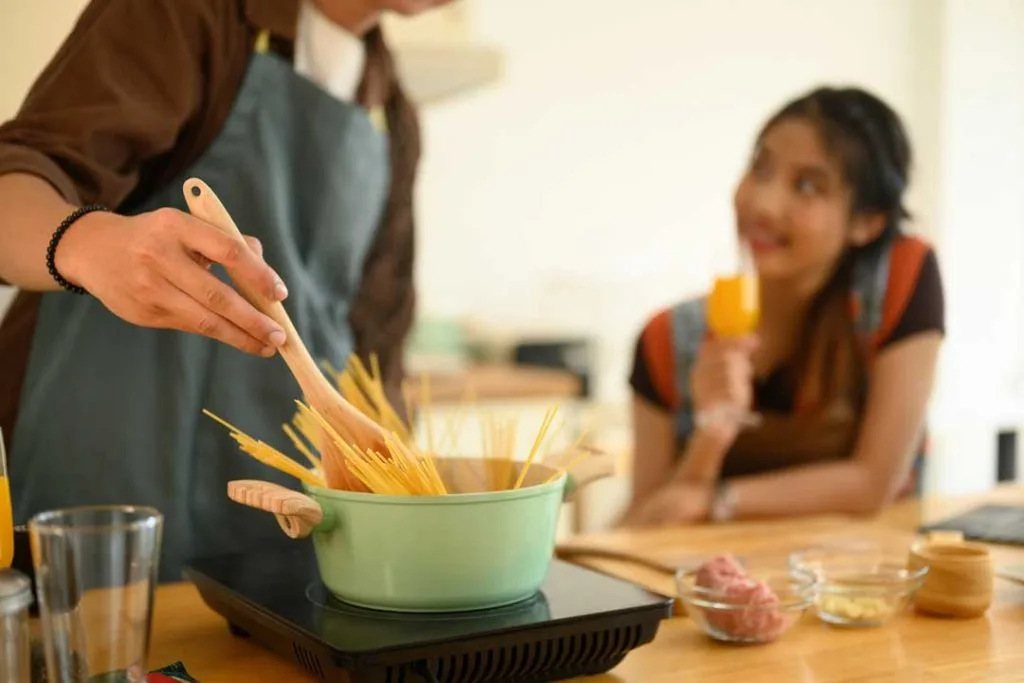
Instead, stir the pasta right after it’s added to the water to prevent clumping. Use a big enough pot because overcrowded pasta is more likely to stick together—and nobody wants pasta imposters masquerading as gnocchi.
Serve Immediately For Best Results
Pasta waits for no one. Serving it right after tossing ensures it maintains its al dente texture and temperature. If you let it sit, it turns into a sticky, gummy mess that even the most forgiving Nonna wouldn’t approve of.
Plan your cooking timeline so the sauce is ready when the pasta comes off the stove. Keep those plates warm too; lukewarm pasta is only acceptable in cold salads (and even that’s debatable).
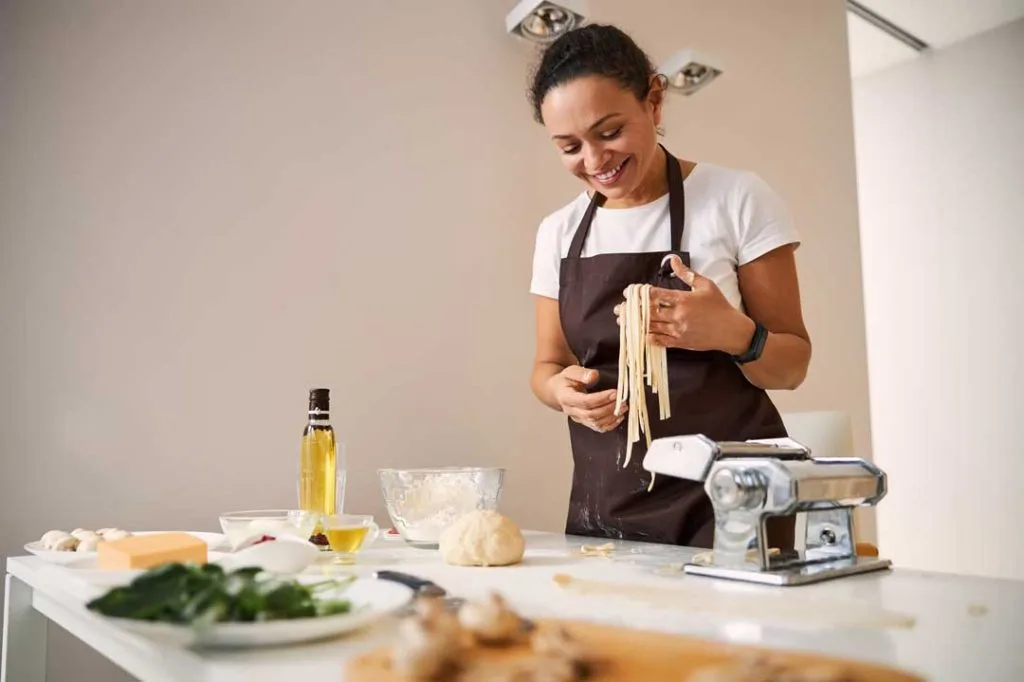
Cooking pasta like an Italian chef isn’t about fancy gadgets or secret family recipes—it’s about nailing the basics with a touch of flair. Sure, you might not have a Nonna yelling at you in the kitchen, but with these tips, you’ll channel her spirit in no time.
Master Pasta: Tips from an Italian Kitchen
Learning to cook pasta like an Italian chef isn’t about complex recipes but rather about mastering fundamental techniques with care and intention.
By selecting the right pasta, using ample salted water, cooking it al dente, reserving the pasta water, and tossing it thoroughly with the sauce before serving immediately, you can transform simple noodles into a truly exceptional dish. Embrace these quick tips and bring the authentic flavors of Italy to your kitchen. Mangia!

Jessi is the creative mind behind The Coffee Mom, a popular blog that combines parenting advice, travel tips, and a love for all things Disney. As a trusted Disney influencer and passionate storyteller, Jessi’s authentic insights and relatable content resonate with readers worldwide.
